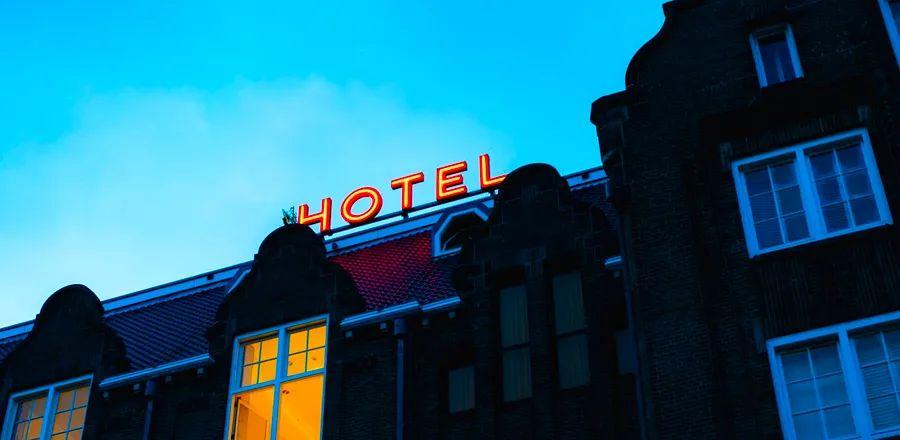Amsterdam Introduces New Hotel Regulations to Tackle Overtourism

In recent years, Amsterdam has launched several high-profile measures to address the issues of mass tourism that have affected the capital.
These measures include the 2023 “Stay Away” campaign, specifically designed to target “nuisance tourists” who visit the city primarily for drugs or disruptive bachelor parties. A ban on tours in the red-light district was enforced starting January 1, 2020. As of May 2023, smoking marijuana on the streets in several neighborhoods is prohibited. Additionally, in July 2023, the city council voted to prohibit cruise ships from docking in the city center (this ordinance has yet to be enforced).
Still, the crowds keep arriving. In 2023, Amsterdam saw a staggering 20.67 million overnight hotel stays, not counting vacation rentals, bed-and-breakfasts, or cruise nights. The current population of Amsterdam is around 1.2 million residents.
This influx of travelers has prompted a new wave of recently announced measures aimed at reducing these numbers, with a key rule that essentially prohibits the construction of new hotels, as stated in a recent announcement from the city council. Other measures include reducing the number of annual river cruise moorings from 2,300 to 1,150 over the next five years.
These initiatives are part of various efforts by city officials aimed at managing the challenges of overtourism, as highlighted by DutchNews and other news sources.
“Our goal is to ensure the city remains livable for both residents and visitors,” the city council’s statement declared. “This entails: preventing overtourism, halting new hotel developments, and limiting tourist hotel nights to no more than 20 million per year.”

Courtesy of Pulitzer Hotel
The latest hotel policy, which tightens existing regulations established in 2017, includes certain exceptions. Notably, it does not apply to upcoming hotels that have already secured a permit (currently, there are 26 such projects in progress, as per the city’s statement). Furthermore, a new hotel can only be established if an existing one closes, and it must not exceed the previous hotel’s capacity while operating more sustainably than its predecessor.
These recently introduced measures are part of a larger strategy to combat mass tourism and enhance the city’s reputation as a hub for arts and culture, rather than vice. In July 2021, the city council enacted an ordinance titled “Tourism in Balance in Amsterdam,” which limits the number of visitors to 20 million per year, encompassing both overnight stays and day trips. Once the visitor count reaches 18 million annually, the city is required to implement additional measures similar to those recently enacted.
Will neighboring Zaandam and Haarlem become the new hotspots for hotels?
Some hotel operators were taken aback—and somewhat puzzled—by the announcement of further hotel restrictions, as reported by local media after mid-April. Remco Groenhuijzen, general manager of the Mövenpick Hotel Amsterdam City Centre, remarked that the hotel ban felt like “an old story,” given that the city imposed restrictive rules on hotel construction seven years ago.
Since then, only three hotels have submitted proposals that met the city’s criteria, according to the New York Times.
Groenhuijzen, who also serves as chairman of Luxury Hotels of Amsterdam, an association representing 24 four- and five-star hotels, warns that a more stringent hotel ban could lead to unintended consequences. He suggests it might drive investors to look at locations outside Amsterdam, such as Amstelveen and Haarlem, to establish new properties—where guests would still travel to the city due to the excellent public transportation options.

Photo by Luca Cavallin/Unsplash
“For example, if you travel to Zaandam, you can take the train, and it’s just a five-minute ride to [Amsterdam] Central Station,” Groenhuijzen explains. “That’s the impact you’ll experience.”
He adds that by limiting supply, the demand—and consequently the prices—for hotel rooms are likely to rise, which may exclude some tourists looking to visit for the right reasons. “At some point, full is full, and you’ll notice that prices will increase,” he states. “This could deter certain segments of tourists from coming to Amsterdam. Young visitors who wish to explore the Rijksmuseum should have access to affordable accommodations.”
It remains to be seen whether the city’s latest efforts to address the negative aspects of its popularity (such as crowded streets in the city center, decreased quality of life for some residents, and a less satisfying experience for visitors) will prove effective. Nevertheless, with tulip season coming to a close and the weather finally warming up, Amsterdam is already bustling with visitors.

1

2

3

4

5
Evaluation :
5/5